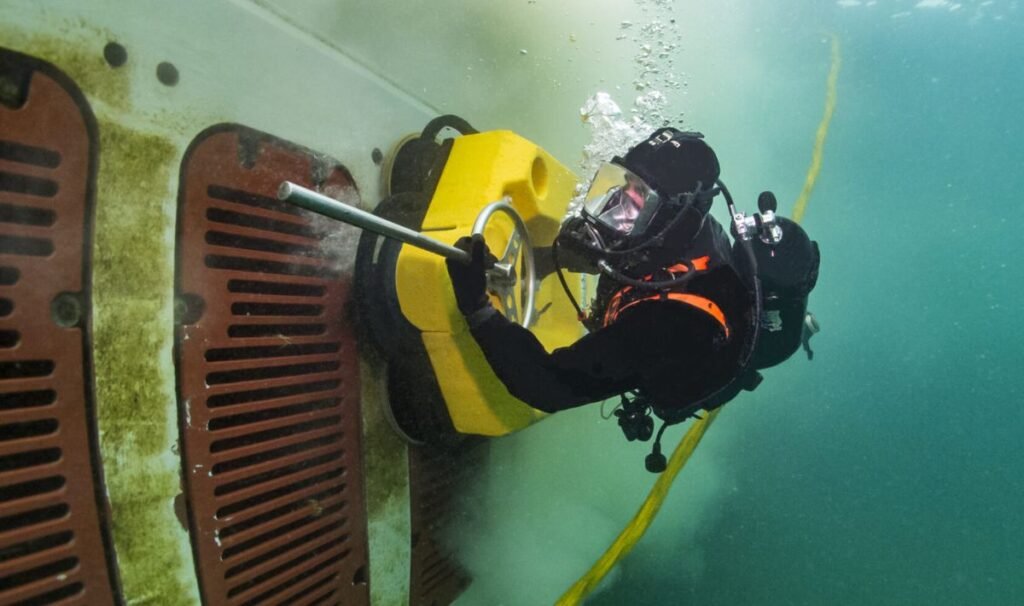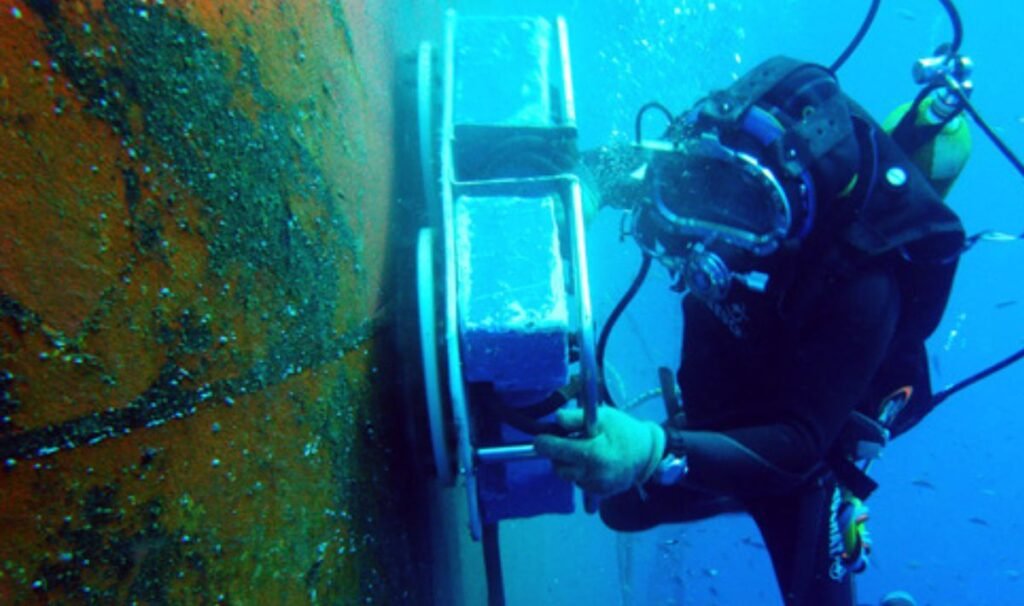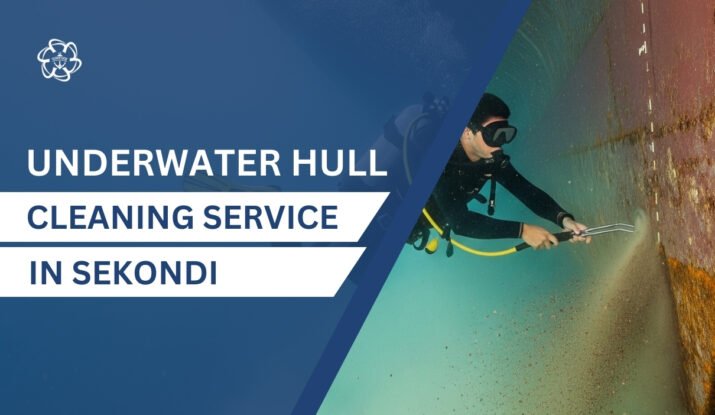If you operate vessels in West Africa, you already know how crucial it is to keep your ships running smoothly and efficiently. One of the most overlooked yet vital maintenance tasks is underwater hull cleaning in Sekondi. This process isn’t just about aesthetics—it’s about performance, safety, and even compliance. Let’s dive into why underwater hull cleaning in Sekondi is a must for every shipowner and how you can get it done right.
Understanding Underwater Hull Cleaning
Underwater hull cleaning is the process of removing marine growth, algae, barnacles, and other debris from the submerged parts of a ship’s hull while the vessel remains afloat. This is typically carried out by professional divers or remotely operated vehicles (ROVs) equipped with specialized cleaning tools. The goal is to restore the hull’s smoothness, reduce drag, and maintain optimal vessel performance.
Why Underwater Hull Cleaning in Sekondi Matters
Sekondi, a key port city in Ghana, is a hub for commercial shipping, fishing, and oil-related activities. The region’s warm, nutrient-rich waters are a breeding ground for marine organisms that quickly attach themselves to ships’ hulls. Without regular underwater hull cleaning in Sekondi, vessels face increased drag, higher fuel costs, and even the risk of failing regulatory inspections.

Common Types of Marine Fouling in Sekondi
Ships in Sekondi typically contend with:
- Barnacles: Hard-shelled creatures that cling stubbornly to hulls.
- Algae and Slime: These form slippery layers that can blanket large areas of the hull.
- Tubeworms and Mussels: These can block intakes and damage ship systems.
Each type of fouling requires a specific cleaning approach, making local expertise essential for effective results.
How Underwater Hull Cleaning is Performed in Sekondi
The process generally follows these steps:
- Inspection: Divers or ROVs assess the hull’s condition using underwater cameras and lights.
- Cleaning: Using mechanical brushes, high-pressure water jets, or specialized scrapers, marine growth is removed from the hull’s surface.
- Post-cleaning Inspection: The hull is checked again to ensure all fouling has been removed and coatings remain intact.
Professional teams in Sekondi use advanced communication systems and safety protocols to coordinate every operation efficiently.
Technologies and Methods Used
There are a few main methods for underwater hull cleaning in Sekondi:
- Manual Diver Cleaning: Divers use handheld brushes and scrapers for precision cleaning, especially in hard-to-reach areas.
- ROV Cleaning: Remotely operated vehicles equipped with rotating brushes or water jets provide fast, efficient cleaning for larger hull surfaces.
- Mechanical Cleaning: This is the most popular method due to its effectiveness and minimal impact on hull coatings and the environment.
The choice of method depends on the vessel size, fouling type, and operational schedule.
Benefits of Regular Underwater Hull Cleaning in Sekondi
Why should you make underwater hull cleaning in Sekondi a routine part of your maintenance plan?
- Fuel Savings: Clean hulls can reduce fuel consumption by up to 5%, translating into significant cost savings over time.
- Restored Speed and Performance: Removing drag-inducing fouling can restore a vessel’s original speed by up to 98%.
- Lower Emissions: Improved fuel efficiency means fewer greenhouse gases and a smaller environmental footprint.
- Extended Coating Life: Regular cleaning prevents corrosion and extends the lifespan of anti-fouling paints.
Environmental and Regulatory Considerations
Environmental responsibility is a top priority in Sekondi. Hull cleaning must be performed in a way that minimizes the release of toxic substances and invasive species into local waters. Local and international regulations, including IMO guidelines, require proper waste management and environmentally safe cleaning methods. Professional divers in Sekondi are trained to comply with these standards, ensuring marine ecosystems remain protected.
Choosing the Right Hull Cleaning Service in Sekondi
Not all service providers are created equal. When selecting a team for underwater hull cleaning in Sekondi, look for:
- Certification and Experience: Choose companies approved by classification societies and with a proven track record in the region.
- Modern Equipment: Ensure they use up-to-date technology for both inspection and cleaning.
- Transparent Pricing: Ask for detailed quotes to avoid hidden fees.
- Strong Safety Record: The best providers have strict safety protocols and a history of incident-free operations.
Safety Measures and Best Practices
Safety is non-negotiable in underwater hull cleaning. Top teams in Sekondi:
- Conduct thorough risk assessments before every job.
- Use full diving gear and reliable communication systems.
- Adhere to international safety standards for both divers and vessels.
- Maintain clear procedures for emergencies and environmental protection.
Cost Factors and Return on Investment
The cost of underwater hull cleaning in Sekondi depends on several factors:
- Vessel Size: Larger ships require more time and resources.
- Fouling Level: Heavier fouling means more intensive cleaning.
- Method Used: ROV cleaning may cost more upfront, but it can save time.
Typical costs range from $5,000 to $50,000 per cleaning, but the return on investment is clear—fuel savings, reduced maintenance, and compliance with regulations quickly offset the expense.

Challenges Unique to Sekondi’s Waters
Sekondi’s port is busy, and its waters are teeming with marine life, which means fouling can occur rapidly. The region’s tidal patterns and water quality can also make cleaning operations more complex. Only experienced local teams understand how to navigate these challenges efficiently.
Case Studies and Success Stories
Many shipowners have seen real benefits from regular underwater hull cleaning in Sekondi. For example, a local cargo vessel reported a 4% reduction in fuel consumption after switching to a quarterly cleaning schedule. Another offshore support vessel extended the life of its anti-fouling coating by two years, saving on both repainting and dry-docking costs.
Conclusion
Underwater hull cleaning in Sekondi is more than a maintenance task—it’s a strategic investment in your vessel’s performance, longevity, and compliance. By partnering with skilled professionals, leveraging the latest technology, and prioritizing environmental responsibility, you can keep your ships running efficiently and sustainably in one of West Africa’s most important ports.
FAQ:
Q1. How often should I schedule underwater hull cleaning in Sekondi?
Most vessels benefit from cleaning every 3-6 months, but frequency depends on operating conditions and fouling rates.
Q2. Can underwater hull cleaning in Sekondi damage my ship’s coating?
Professional teams use non-abrasive tools and methods to protect anti-fouling coatings and minimize wear.
Q3. Is underwater hull cleaning in Sekondi environmentally friendly?
Yes, reputable providers follow strict environmental protocols and comply with local and international regulations.
Q4. What’s the typical cost of underwater hull cleaning in Sekondi?
Q5. Can cleaning be done while the ship is loading or unloading?
Yes, most services can work around cargo operations to minimize downtime and keep your schedule on track.


